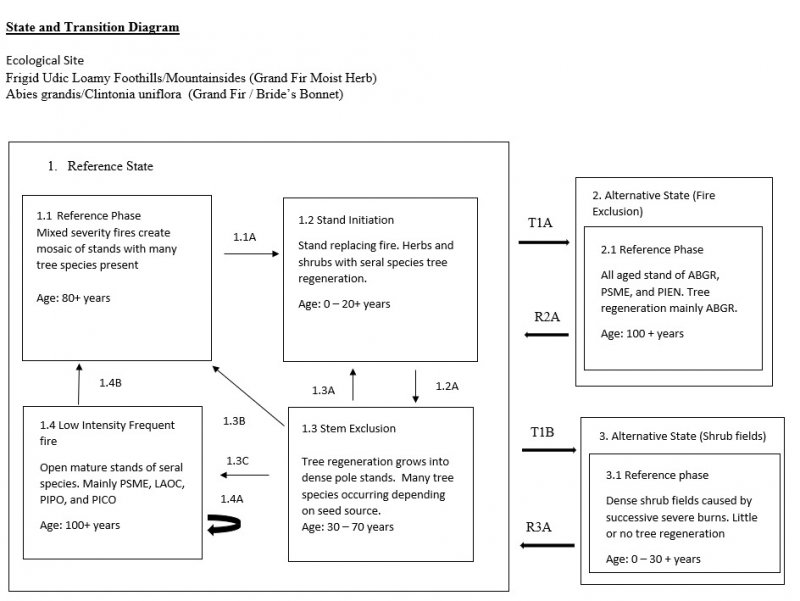
Natural Resources
Conservation Service
Ecological site F043AY529WA
Warm-Frigid, Dry-Udic, Loamy Foothills/Mountainsides, ashy surface (Grand Fir Moist Herb) Abies grandis/Clintonia uniflora
Last updated: 10/14/2020
Accessed: 12/21/2025
General information
Provisional. A provisional ecological site description has undergone quality control and quality assurance review. It contains a working state and transition model and enough information to identify the ecological site.
MLRA notes
Major Land Resource Area (MLRA): 043A–Northern Rocky Mountains
Major land resource area (MLRA): 043A-Northern Rocky Mountains
Description of MLRAs can be found in: United States Department of Agriculture, Natural Resources Conservation Service. 2006. Land Resource Regions and Major Land Resource Areas of the United States, the Caribbean, and the Pacific Basin. U.S. Department of Agriculture Handbook 296.
Available electronically at: http://www.nrcs.usda.gov/wps/portal/nrcs/detail/soils/ref/?cid=nrcs142p2_053624#handbook
LRU notes
Most commonly found in LRU 43A04 (Selkirk Mountains). Also found in adjacent areas of 43A03, 44A01 and 44A02. Climate parameters were obtained from PRISM and other models for the area. Landscape descriptors are derived from USGS DEM products and their derivatives.
Classification relationships
Relationship to Other Established Classifications:
United States National Vegetation Classification (2008), Grand Fir – Douglas-fir Central Rocky Mountain Forest & Woodland Alliance.
Washington Natural Heritage Program. Ecosystems of Washington State, A Guide to Identification, Rocchio and Crawford, 2015 - Northern Rocky Mt. Mesic Montane Mixed Conifer Forest (Cedar-Hemlock)
Description of Ecoregions of the United States, USFS PN # 1391, 1995 - M333 Northern Rocky Mt. Forest-Steppe-Coniferous Forest-Alpine Meadow Province
Level III and IV Ecoregions of WA, US EPA, June 2010 – 15y Selkirk Mountains, 15w Western Selkirk Maritime Forest.
This ecological site includes the following USDA Forest Service Plant Associations Grand Fir Series: ABGR/CLUN. (Williams et. al. 1995)
Ecological site concept
This ES is distinguished by an overstory of grand fir and Douglas-fir. Understory shrubs can include Acer glabrum, Linnaea borealis, Menziesia ferruginea, Physocarpus malvaceus, Spiraea betulifolia, Symphoricarpos occidentalis, and Vaccinium membranaceum. Herbaceous layers may be graminoid- or forb-dominated and may include Bromus vulgaris, Calamagrostis rubescens, Carex geyeri, Clintonia uniflora, Coptis occidentalis, Cornus canadensis, Linnaea borealis, and Trautvetteria caroliniensis. It occurs on loamy foothills and mountainsides with >7 inches of volcanic ash on the surface, water table at >30 inches depth and moderate to high available water holding capacity. This ES group fits into the National Vegetation Standard’s Grand Fir - Douglas-fir Central Rocky Mountain Forest & Woodland Alliance and Washington State’s Natural Heritage Program’s Northern Rocky Mt. Mesic Montane Mixed Conifer Forest.
Table 1. Dominant plant species
| Tree |
(1) Abies grandis |
|---|---|
| Shrub |
(1) Acer glabrum |
| Herbaceous |
(1) Clintonia uniflora |
Click on box and path labels to scroll to the respective text.
